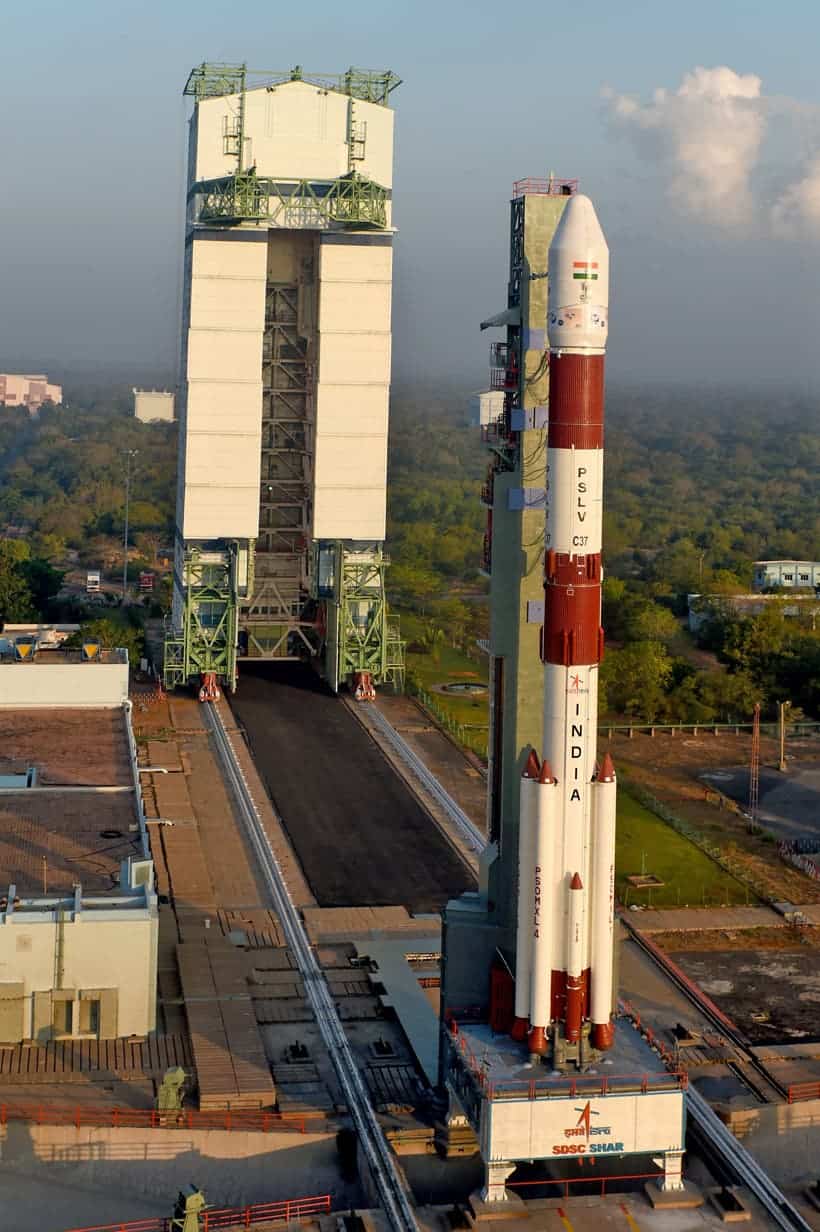The Indian Space Research Organization (ISRO) hopes to one-up every other competitor in a big way — by launching a record 104 satellites on a single rocket. The agency has established a reputation for being impressively frugal, and this launch should cement its place in the developing commercial space race.

Image credits ISRO.
Currying favor
There’s a growing need for satellites to handle modern society’s denser and more complex communication systems. So space agencies and private companies are competing to address this demand. Over the years, ISRO has distinguished itself on the market for its surprisingly cost-effective missions.
Prime Minister Narendra Modi wittily remarked in 2014 that ISRO launched four foreign satellites into orbit for less than it cost Hollywood to make “Gravity”. Just one year before, the agency put an unmanned rocket on Mars’ orbit for $73 million. For a similar mission, Maven Mars, NASA shelved out $671 million.
Now ISRO is looking to securing a place on the market by setting the record for most satellites launched at once. The agency plans to blast off an incredible 104 satellites at about 500 km from Earth in the PSLV-C37/Cartosat 2 mission. They will be deployed from the tried-and-true Polar Satellite Launch Vehicle, now on its 39th mission — the same rocket Modi was referring to.
“We want to make optimum use of our capacity. We initially wanted to launch three of our satellites, of which one weighs 730 kg and the other two 19 kg each.”
“As there was additional space for 600 kg, we decided to accommodate the 101 nanosatellites,” said ISRO chairman AS Kiran Kumar.
I just love the fact that in a three-satellite launch, ISRO found room for 101 extra ones.
Last steps
The Mission Readiness Review committee and Launch Authorisation Board has green-lit the launch and starting at 5:28 AM today, the 28-hour countdown to ignition has been officially started, ISRO said.
The agency used the biggest variant of the PSLV at their disposal for the mission — the XL variant, with an estimated 1800 kg (3970 pounds) maximum payload. It’s currently fueled up and awaiting launch at the Sriharikota spaceport, 125 km from Chennai.
It will carry a 730 kilogram (1610 pound) main satellite of the Cartosat 2 series and 103 co-passenger “nanosatellites” adding a further 664 kilograms (1463 pounds) of weight. The latter are almost all supplied by other countries including Israel, Kazakhstan, and Switzerland. The US is the biggest contractor with 96 such satellites. India will launch two co-passenger satellites on the mission.
Cartosat 2 is meant for earth observation and will be used to monitor road networks, coastal land use and regulation, water distribution, and map creation among other applications. The two INS’s (Isro Nano Satellites) will provide a testing and demonstration platform for ISRO tech. INS-1A carries a Surface Bidirectional Reflectance Distribution Function Radiometer and INS-1B carries the Earth Exosphere Lyman Alpha Analyser as payloads.
The launch is scheduled for launch on Wednesday, February 15, at 9:28 IST. If you want to see history blasting off, here’s your chance.






